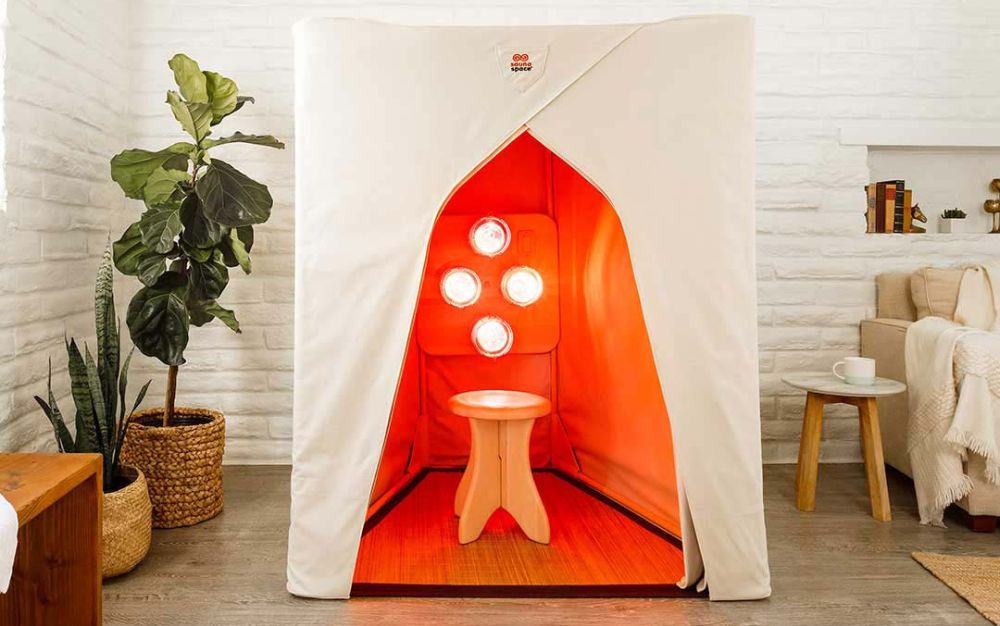Unraveling the Health Hazard Blueprint: A Guide to a Healthy Lifestyle
Welcome to Beyondfitwell.com, where we are dedicated to helping you uncover the secrets to achieving a healthy and fulfilling life. In this article, we will delve into the world of health hazards and explore how to obtain the coveted “health hazard blueprint.” By understanding the factors that can negatively impact our well-being and implementing effective strategies, we can pave the way for a vibrant and thriving existence. So, let’s embark on this journey together and unlock the path to optimal health!
In today’s fast-paced and modern world, it has become increasingly important to prioritize our health. With the abundance of information available, it can be overwhelming to know where to start. That’s why we are here to provide you with a comprehensive guide on unraveling the health hazard blueprint.
What is the health hazard blueprint?
The health hazard blueprint refers to a systematic approach to identifying and mitigating potential risks and hazards that can negatively impact our health. It involves being aware of the various factors, both internal and external, that can harm our well-being and implementing practical strategies to counteract them.
Understanding the factors that negatively impact our well-being
Before we can effectively navigate the realm of health hazards, it is crucial to develop awareness regarding their existence and potential consequences. From environmental factors to lifestyle choices, various elements can pose risks to our well-being. Acknowledging the existence of these hazards is the first step towards building a solid foundation for a healthy lifestyle.
Unveiling the hidden dangers of health hazards
Health hazards can lurk in various aspects of our lives, and recognizing their presence is essential to preventing their detrimental effects. Poor diet choices, sedentary lifestyles, environmental pollutants, and stress are just a few examples of common culprits that can affect our health. Understanding these risks allows us to take proactive measures to mitigate them.
Blueprint to Wellness: Crafting a Healthier Lifestyle
Now that we understand the importance of recognizing and understanding health hazards, let’s dive into the blueprint to wellness. Here are some key components:
Nourishing Your Body
Achieving optimal health begins with nourishing our bodies with wholesome and nutrient-rich foods. By adopting a balanced diet comprised of fresh fruits, vegetables, lean proteins, and whole grains, we can fuel our bodies and provide the essential building blocks for robust well-being. Proper nutrition is the cornerstone of a healthy lifestyle.
Fostering Physical Fitness
Regular physical activity acts as a powerful tool in maintaining good health. Engaging in exercises that suit your preferences and physical capabilities can boost cardiovascular health, strengthen muscles, and improve overall well-being. From brisk walks in nature to high-intensity interval training, finding an activity that is enjoyable and sustainable will be instrumental on your wellness journey.
The Hazards Within: Navigating Mental and Emotional Well-being
In addition to taking care of our physical health, it is equally important to prioritize our mental and emotional well-being. Stress, both from internal and external sources, can have a profound effect on our mental and emotional well-being. Learning to identify stressors in our lives and implementing relaxation techniques, such as deep breathing exercises or mindfulness practices, can help mitigate its negative impact.
Cultivating Healthy Relationships
Our connections with others play a significant role in our overall health. Building and nurturing meaningful relationships can enhance our emotional well-being and support system. Surrounding ourselves with individuals who uplift and inspire us fosters positivity and provides vital emotional support during challenging times.
Unveiling the Blueprint: Promoting a Healthy Environment
Creating a healthy living environment involves reducing exposure to harmful toxins and pollutants. Implementing measures such as proper ventilation, using natural cleaning products, and minimizing the use of chemical-laden personal care products can help promote a cleaner and healthier space.
Prioritizing sleep and rest is also crucial for overall health and well-being. Establishing consistent sleep patterns and creating a restful sleeping environment can enhance the quality and duration of your sleep. Adequate rest is essential for physical and mental rejuvenation, allowing your body to repair and replenish itself.
Conquering Health Hazards: Your Path to Wellness
To embark on the path to optimal health, it’s important to implement small changes gradually. Incorporating sustainable adjustments into your daily routine, such as replacing sugary drinks with water, taking the stairs instead of the elevator, or practicing daily gratitude, can yield significant long-term benefits. Celebrate your achievements along the way and remember to prioritize self-care practices that nourish your mind, body, and soul.
The pursuit of a healthy lifestyle is a lifelong journey. Stay curious and committed to ongoing education about health and wellness. Embrace growth and seize opportunities for improvement. By unraveling the health hazard blueprint, you equip yourself with the knowledge and tools to navigate the potential pitfalls that can hinder well-being. Remember, your journey towards a healthy lifestyle starts with awareness, dedication, and compassion for yourself.
Now that you are equipped with this comprehensive guide, it’s time to take charge of your health and unlock the path to optimal well-being. Best wishes on your journey!
Recognizing the Hidden Dangers: Unveiling Health Hazards
The Importance of Awareness in Preventing Health Hazards
Developing a strong sense of awareness regarding the existence and potential consequences of health hazards is crucial for effectively navigating the realm of well-being. In today’s fast-paced and interconnected world, it is easier than ever to overlook the hidden dangers that can negatively impact our health. By consciously acknowledging the existence of these hazards, we can lay the groundwork for a solid foundation of a healthy lifestyle.
Understanding the Multifaceted Nature of Health Hazards
Health hazards come in various forms, and their presence can significantly affect our overall well-being. It is important to recognize that health hazards are not limited to a single domain but permeate various aspects of our lives. From the physical to the environmental and even the psychological, these hazards can pose risks to our health. Therefore, understanding the common culprits that can impact our well-being is essential to taking proactive measures and minimizing their detrimental effects.
The Role of Lifestyle Choices in Health Hazards
Unhealthy lifestyle choices can be a significant contributor to various health hazards. Poor diet choices, sedentary lifestyles, and harmful habits such as smoking or excessive alcohol consumption can increase the risk of chronic conditions like obesity, heart disease, and certain types of cancer. By recognizing the impact of these choices on our health, we can make informed decisions and adopt healthier habits that support our overall well-being.
Environmental Factors and Their Impact on Health
Environmental pollutants can also pose serious health hazards. Air pollution, exposure to toxic substances, and contaminants in water sources can all have detrimental effects on our well-being. By identifying potential sources of environmental hazards and taking steps to reduce our exposure, such as using natural cleaning products, practicing proper waste disposal, and improving indoor air quality, we can safeguard our health and create a healthier living environment.
The Role of Stress in Health Hazards
Stress has emerged as a significant health hazard in our modern lives. Chronic stress, whether from work, relationships, or other sources, can take a toll on our mental and physical well-being. It can lead to the development of conditions like anxiety and depression, weaken the immune system, and increase the risk of various chronic diseases. Recognizing and effectively managing stress through relaxation techniques, healthy coping mechanisms, and self-care practices is crucial for mitigating its negative impact on our health.
Empowering Ourselves Through Education and Awareness
Expanding our knowledge about health hazards and their potential consequences is empowering. By staying informed about current research, emerging hazards, and best practices for prevention, we can make more informed choices about our health. Continual education and proactive awareness enable us to take control of our well-being and make the necessary adjustments to minimize health risks.
By expanding our understanding of health hazards and the importance of awareness, we equip ourselves with the tools and knowledge needed to prevent these hazards from negatively impacting our lives. Recognizing the multifaceted nature of health hazards, including lifestyle choices, environmental factors, and stress, allows us to take proactive measures to protect our well-being and strive for optimal health.
Blueprint to Wellness: Crafting a Healthier Lifestyle
Nourishing Your Body with Wholesome Foods
Achieving optimal health begins with nourishing our bodies with a well-balanced and diverse diet filled with wholesome and nutrient-rich foods. These foods are essential in providing the fuel and building blocks necessary for robust well-being. Incorporating a wide variety of fresh fruits, vegetables, lean proteins, and whole grains into your meals can ensure that you receive a wide array of vitamins, minerals, and antioxidants.
Fresh fruits and vegetables are rich sources of vitamins and minerals that support various bodily functions, boost immune function, and promote healthy skin. Leafy greens, such as spinach and kale, are particularly beneficial as they are packed with nutrients and antioxidants that help fight inflammation and protect against chronic diseases.
Lean proteins, such as chicken, fish, tofu, and legumes, are essential for the growth, repair, and maintenance of body tissues. They provide a rich source of amino acids, which are the building blocks of proteins. Whole grains, such as brown rice, quinoa, and whole wheat bread, are complex carbohydrates that provide sustained energy and essential fiber for a healthy digestive system.
By adopting a balanced diet rich in wholesome foods, you can fuel your body with the necessary nutrients to thrive and support your overall well-being. Proper nutrition is indeed the cornerstone of a healthy lifestyle.
Fostering Physical Fitness for Optimal Health
Regular physical activity is a powerful tool in maintaining good health and should be an essential part of your wellness journey. Engaging in exercises that suit your preferences and physical capabilities can provide numerous benefits, including boosting cardiovascular health, strengthening muscles, improving flexibility, and enhancing overall well-being.
There are various forms of physical activity to choose from, so it’s important to find activities that you enjoy and that are sustainable for you. For example, if you prefer outdoor activities, you can incorporate brisk walks or hikes in nature into your routine. These activities not only provide exercise but also allow you to connect with nature, reduce stress, and clear your mind.
For those who prefer more intense workouts, high-intensity interval training (HIIT) can be a great option. HIIT involves short bursts of intense exercise followed by periods of rest or lower intensity. This type of workout can help improve cardiovascular fitness, burn calories, and build strength.
Remember that physical fitness is a journey, and it’s important to start at your own pace and gradually increase the intensity and duration of your workouts. Find activities that bring you joy and motivation, as this will increase the likelihood of sticking to your fitness routine in the long term.
Incorporating regular physical activity into your lifestyle is a key component of achieving optimal health. By fostering physical fitness through activities that you enjoy and that suit your abilities, you can not only improve your physical well-being but also enhance your mental and emotional well-being.
The Hazards Within: Navigating Mental and Emotional Well-being
Understanding Stress and Its Impact on Mental and Emotional Well-being
In today’s fast-paced and demanding world, stress has become a common and pervasive problem. It is important to recognize the significant impact that stress can have on our mental and emotional well-being. Stress can arise from various sources, including work pressures, personal relationships, financial concerns, and even the constant stream of information from social media and news outlets.
When stress remains unmanaged, it can lead to a range of negative effects on our mental and emotional health. Chronic stress can contribute to anxiety and depression, increase our susceptibility to other mental health disorders, and even impair our cognitive function. Therefore, it is crucial to develop awareness and understanding of our own stressors and their impact on our well-being.
To mitigate the negative impact of stress, it is important to implement effective relaxation techniques. Deep breathing exercises, for instance, can activate the body’s relaxation response, reducing stress hormones and promoting a sense of calm. Similarly, adopting mindfulness practices can help us stay present and non-judgmental, allowing us to better manage stress and cultivate resilience.
Cultivating Healthy and Supportive Relationships
While stress management techniques are essential, it is equally important to acknowledge the role that our connections with others play in our overall mental and emotional well-being. Building and nurturing healthy relationships can be a powerful protective factor against stress and its detrimental effects.
When we surround ourselves with individuals who uplift and inspire us, we create a positive and supportive environment that enhances our emotional well-being. Healthy relationships provide a sense of belonging, understanding, and validation. They offer us a safe space to express our thoughts and emotions, providing vital emotional support during challenging times.
To cultivate healthy relationships, it is important to prioritize open and honest communication. This involves expressing our needs and boundaries while actively listening to others. Building mutual trust and respect allows for the creation of a strong and supportive network, where individuals can lean on one another for emotional support and guidance.
Additionally, it is important to engage in activities that promote connection and social interaction. Joining clubs, participating in group fitness classes, or volunteering for a cause we care about can help us meet like-minded individuals and build meaningful relationships. These connections not only enrich our lives but also contribute to a positive state of mental and emotional well-being.
By understanding the impact of stress on our mental and emotional well-being and cultivating healthy relationships, we can navigate the hazards within and foster a state of optimal well-being. Prioritizing self-care, practicing relaxation techniques, and building supportive connections are essential steps on the journey to a healthy and fulfilling life.
Unveiling the Blueprint: Promoting a Healthy Environment
Reducing Environmental Toxins for a Clean and Safe Space
Creating a healthy living environment involves reducing exposure to harmful toxins and pollutants. It is essential to minimize the presence of environmental hazards in our homes and surroundings to promote optimal health. By implementing various measures to reduce the levels of toxins, we can foster a cleaner and safer space for ourselves and our loved ones.
One effective way to minimize exposure to environmental toxins is by ensuring proper ventilation in our living spaces. Adequate ventilation helps in removing indoor air pollutants and circulating fresh air throughout the room. Opening windows and doors regularly to allow for air exchange, investing in air purifiers, and utilizing exhaust fans can significantly enhance indoor air quality.
In addition to ventilation, opting for natural cleaning products can further promote a cleaner and healthier environment. Many conventional cleaning products contain harmful chemicals, such as ammonia and bleach, which can have negative effects on our health. Switching to natural alternatives, such as vinegar, baking soda, and essential oils, can provide effective cleaning solutions without the associated health risks.
Another crucial aspect of reducing environmental toxins is minimizing the use of chemical-laden personal care products. Many conventional personal care products, including soaps, shampoos, and cosmetics, contain harmful ingredients like parabens, phthalates, and sulfates, which can disrupt our hormonal balance and impair our overall well-being. Opting for natural and organic alternatives or making homemade products using simple ingredients can help eliminate exposure to these harmful substances.
Prioritizing Sleep and Rest for Optimal Well-being
Sleep is a vital component of overall health and well-being. Establishing consistent sleep patterns and creating a restful sleeping environment can enhance the quality and duration of your sleep, leading to increased vitality and improved cognitive functions. Adequate rest is essential for physical and mental rejuvenation, allowing your body to repair and replenish itself.
To promote better sleep and create a relaxing sleep environment, consider implementing the following strategies:
1. Establish a consistent sleep routine: Going to bed and waking up at the same time each day helps regulate your internal body clock and improves sleep quality. Create a relaxing pre-sleep routine that includes activities like reading, taking a warm bath, or practicing gentle stretching exercises.
2. Design a peaceful sleeping environment: Use blackout curtains or blinds to block out external light, invest in a supportive mattress and comfortable bedding, and maintain a cool and quiet temperature in your bedroom for optimal sleep conditions. Consider using aromatherapy with calming scents such as lavender to enhance relaxation.
3. Minimize exposure to electronic devices: The blue light emitted by electronic devices, such as smartphones, computers, and televisions, can disrupt your sleep-wake cycle. Avoid using these devices at least an hour before bed or use blue light filters or apps that reduce blue light emissions.
4. Practice relaxation techniques: Incorporating relaxation techniques such as deep breathing exercises, progressive muscle relaxation, or meditation before bedtime can help calm your mind and prepare your body for sleep. These techniques can reduce stress levels and promote a restful sleep.
By prioritizing sleep and creating a sleep-friendly environment, you can ensure that your body gets the rest it needs to function optimally. Adequate and restorative sleep sets the foundation for overall well-being and contributes to a healthier and more fulfilling life.
Conquering Health Hazards: Your Path to Wellness
Implementing Small Changes
The journey towards a healthier lifestyle begins with small, manageable steps. It is important to understand that making drastic changes all at once can be overwhelming and difficult to sustain in the long run. Instead, focusing on implementing small changes into your daily routine can lead to significant improvements over time.
Start by identifying one aspect of your lifestyle that you would like to improve. This could be related to nutrition, exercise, stress management, or any other area that you feel needs attention. Once you have identified your target area, brainstorm small changes that you can make to support your goals.
For example, if your goal is to improve your nutrition, start by replacing sugary drinks with water. Sugary drinks are often high in calories and can contribute to weight gain and other health issues. By making this simple change, you can reduce your calorie intake and hydrate your body more effectively.
Another small change you can make is to take the stairs instead of the elevator whenever possible. This simple adjustment can increase your daily physical activity and help you burn extra calories throughout the day. Over time, these small changes can add up and contribute to improved overall health and wellness.
In addition, practicing daily gratitude can have a positive impact on your mental well-being. Taking a few moments each day to reflect on the things you are thankful for can shift your mindset towards positivity and improve your overall outlook on life. This can be as simple as jotting down a few things you are grateful for in a gratitude journal or sharing them with a loved one.
Remember, the key to implementing small changes is to focus on sustainability. Choose changes that you can easily incorporate into your daily routine without feeling overwhelmed. By taking small, manageable steps, you can make steady progress towards achieving your health goals.
Celebrating Progress and Self-Care
As you embark on your journey towards optimal health, it is important to celebrate your achievements along the way. Each step you take towards a healthier lifestyle is a triumph worth recognizing and celebrating.
Take the time to acknowledge your progress and give yourself credit for the changes you have made. This can boost your motivation and provide a sense of accomplishment, which can further fuel your commitment to a healthy lifestyle.
Incorporating self-care practices into your routine is also vital for maintaining overall well-being. Self-care can take many forms, depending on your preferences and needs. This could include activities such as meditation, engaging in hobbies that bring you joy, spending time in nature, or pampering yourself with a relaxing bath or massage.
By prioritizing self-care, you nourish not only your body but also your mind and soul. It allows you to recharge and rejuvenate, enabling you to approach life with more energy and positivity. Remember, self-care is not selfish; it is a necessary component of maintaining a healthy lifestyle.
Continued Education and Growth
The pursuit of a healthy lifestyle is a lifelong journey that requires ongoing education and growth. As science and research progress, new insights and information about health and wellness may arise. It is important to stay curious and committed to expanding your knowledge in these areas.
One way to continue your education is by staying informed about the latest developments in the field of health and wellness. This can be done by reading reputable books, articles, and blogs, listening to podcasts, or attending seminars and workshops related to health topics that interest you.
Additionally, being open-minded and adaptable is crucial as you navigate your health journey. The strategies and practices that work for one person may not necessarily work for another. By remaining flexible and willing to explore different approaches, you can find what works best for you and make adjustments as needed.
Embrace growth and seize opportunities for improvement. Reflect on your experiences and learn from them, both the successes and the setbacks. Use this knowledge to refine your approach and continue making progress towards your health goals.
Remember, the path to optimal health is a dynamic and evolving process. By implementing small changes, celebrating your achievements, and committing to continued education and growth, you can conquer health hazards and pave your own path to wellness.
To learn more about the health hazard blueprint, you can visit our category on health.
By unraveling the health hazard blueprint, you empower yourself with the necessary knowledge and tools to effectively navigate the potential pitfalls that can impede your overall well-being. It is crucial to understand that achieving a healthy lifestyle is not simply a destination; rather, it is an ongoing journey that requires continuous effort and commitment. By adopting a mindset of awareness, dedication, and self-compassion, you lay a strong foundation for your path to optimal health.
Awareness is the first step towards making positive and sustainable changes in your lifestyle. By becoming conscious of the factors that can negatively impact your well-being, you can take proactive steps to mitigate their effects. This includes recognizing the detrimental impact of poor diet choices, sedentary lifestyles, environmental pollutants, and stressors in your life. Having this awareness allows you to take control of your health and make informed decisions that align with your goals.
Dedication is an essential component of your journey towards a healthier lifestyle. It requires a commitment to consistently incorporating healthy habits into your daily routine. This can include nourishing your body with nutrient-rich foods, engaging in regular physical activity, prioritizing sleep and rest, and cultivating healthy relationships. By dedicating yourself to these practices, you create a sustainable and balanced lifestyle that promotes overall well-being.
Compassion for yourself is vital throughout your wellness journey. It is important to remember that progress takes time and setbacks are a natural part of the process. By treating yourself with kindness and understanding, you can overcome challenges and stay motivated. Celebrating your achievements, no matter how small, helps to reinforce positive behaviors and allows you to appreciate the progress you have made.
As you embark on the path to optimal health, it is essential to stay informed and continuously educate yourself about health and wellness. Advancements in scientific research and new insights may arise, and it is important to remain open-minded and adaptable. This ongoing education and growth mindset enable you to refine your approach and incorporate new strategies that align with your goals and values.
In conclusion, dear reader from Beyondfitwell.com, by unraveling the health hazard blueprint, you equip yourself with the knowledge and tools necessary to navigate the potential pitfalls that can hinder your well-being. Remember that your journey towards a healthy lifestyle begins with awareness, dedication, and compassion for yourself. Embrace the continuous process of growth and improvement, and celebrate each step you take towards optimal health. Best of luck on your voyage!





